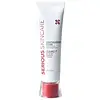What's inside
What's inside
 Key Ingredients
Key Ingredients

 Benefits
Benefits

 Concerns
Concerns

 Ingredients Side-by-side
Ingredients Side-by-side

Benzoyl Peroxide 5%
Water
Skin ConditioningGlycerin
HumectantMelaleuca Alternifolia Leaf Oil
AntioxidantCamellia Sinensis Leaf Extract
AntimicrobialButylene Glycol
HumectantSodium PCA
HumectantBetaine
HumectantSorbitol
HumectantGlycine
BufferingAlanine
MaskingProline
Skin ConditioningSerine
MaskingThreonine
Arginine
MaskingLysine
Skin ConditioningGlutamic Acid
HumectantAllantoin
Skin ConditioningDisodium EDTA
Carbomer
Emulsion StabilisingAcrylates/C10-30 Alkyl Acrylate Crosspolymer
Emulsion StabilisingAminomethyl Propanol
BufferingPhenoxyethanol
PreservativeMethylparaben
PreservativeButylparaben
MaskingEthylparaben
PreservativePropylparaben
PreservativeIsobutylparaben
AntimicrobialBenzoyl Peroxide 5%, Water, Glycerin, Melaleuca Alternifolia Leaf Oil, Camellia Sinensis Leaf Extract, Butylene Glycol, Sodium PCA, Betaine, Sorbitol, Glycine, Alanine, Proline, Serine, Threonine, Arginine, Lysine, Glutamic Acid, Allantoin, Disodium EDTA, Carbomer, Acrylates/C10-30 Alkyl Acrylate Crosspolymer, Aminomethyl Propanol, Phenoxyethanol, Methylparaben, Butylparaben, Ethylparaben, Propylparaben, Isobutylparaben
Water
Skin ConditioningEthylhexyl Palmitate
EmollientPolyacrylamide
C13-14 Isoparaffin
EmollientLaureth-7
EmulsifyingDimethicone
EmollientPolysorbate 60
EmulsifyingHamamelis Virginiana Extract
AntiseborrhoeicCaprylic/Capric Triglyceride
MaskingCetearyl Alcohol
EmollientGlycerin
HumectantSorbitan Stearate
EmulsifyingOryza Sativa Starch
AbsorbentPhenoxyethanol
PreservativeMethylparaben
PreservativeEthylparaben
PreservativeButylparaben
MaskingPropylparaben
PreservativeIsobutylparaben
AntimicrobialTocopherol
AntioxidantCamellia Sinensis Leaf Extract
AntimicrobialMacrocystis Pyrifera Extract
Skin ConditioningHydrolyzed Soy Protein
HumectantBisabolol
MaskingImidazolidinyl Urea
PreservativeDisodium EDTA
Pelargonium Graveolens Oil
MaskingLavandula Angustifolia Extract
Skin ConditioningStyrax Benzoin Gum
MaskingCI 14700
Cosmetic ColorantCI 19140
Cosmetic ColorantWater, Ethylhexyl Palmitate, Polyacrylamide, C13-14 Isoparaffin, Laureth-7, Dimethicone, Polysorbate 60, Hamamelis Virginiana Extract, Caprylic/Capric Triglyceride, Cetearyl Alcohol, Glycerin, Sorbitan Stearate, Oryza Sativa Starch, Phenoxyethanol, Methylparaben, Ethylparaben, Butylparaben, Propylparaben, Isobutylparaben, Tocopherol, Camellia Sinensis Leaf Extract, Macrocystis Pyrifera Extract, Hydrolyzed Soy Protein, Bisabolol, Imidazolidinyl Urea, Disodium EDTA, Pelargonium Graveolens Oil, Lavandula Angustifolia Extract, Styrax Benzoin Gum, CI 14700, CI 19140
Ingredients Explained
These ingredients are found in both products.
Ingredients higher up in an ingredient list are typically present in a larger amount.
Butylparaben is a preservative, is a paraben, and is not reef safe. It can be bad for dry skin and worsen eczema.
Camellia Sinensis Leaf Extract is derived from the leaves of the tea plant. Black tea, green tea, and oolong tea are all harvested from this plant.
This ingredient has many skin benefits:
This ingredient contains polyphenols, a strong antioxidant. Antioxidants help fight off molecules that damage skin cells.
On top of that, the antioxidants in green tea neutralize free-radicals from the sun. This gives the skin some extra UV protection, but should not replace sunscreen.
Many components of tea have anti-inflammatory properties.
Polyphenols and L-theanine help soothe the skin and reduce irritation. The caffeine in Camellia Sinensis Leaf Extract helps calm inflamed blood vessels.
Other compounds found in tea include: Vitamin Bs, linoleic acid, magnesium, calcium, iron, and zinc.
Research has shown both drinking Camellia Sinensis Leaf Tea and applying it to the skin can help boost skin elasticity and hydration. Studies also show using tea extract may reduce sebum, or oil, production.
Learn more about Camellia Sinensis Leaf ExtractDisodium EDTA plays a role in making products more stable by aiding other preservatives.
It is a chelating agent, meaning it neutralizes metal ions that may be found in a product.
Disodium EDTA is a salt of edetic acid and is found to be safe in cosmetic ingredients.
Learn more about Disodium EDTAEthylparaben is a preservative, is a paraben, and is not reef safe.
Glycerin is already naturally found in your skin. It helps moisturize and protect your skin.
A study from 2016 found glycerin to be more effective as a humectant than AHAs and hyaluronic acid.
As a humectant, it helps the skin stay hydrated by pulling moisture to your skin. The low molecular weight of glycerin allows it to pull moisture into the deeper layers of your skin.
Hydrated skin improves your skin barrier; Your skin barrier helps protect against irritants and bacteria.
Glycerin has also been found to have antimicrobial and antiviral properties. Due to these properties, glycerin is often used in wound and burn treatments.
In cosmetics, glycerin is usually derived from plants such as soybean or palm. However, it can also be sourced from animals, such as tallow or animal fat.
This ingredient is organic, colorless, odorless, and non-toxic.
Glycerin is the name for this ingredient in American English. British English uses Glycerol/Glycerine.
Learn more about GlycerinIsobutylparaben is a paraben. It can be bad for dry skin.
Methylparaben is a preservative and is a paraben. It is used to prevent the growth of fungus, mold, and other harmful bacteria. Parabens are chemicals used as preservatives in both cosmetics and food.
Methylparaben can be synthetically created. It can also be found naturally in some fruits, such as blueberries.
Oftentimes, Methylparaben is combined with other parabens to help increase the shelf life.
The safety of Methylparaben is currently being studied. While ongoing studies are looking into the safety of parabens, the results have been very mixed. Some studies have not found Methylparaben to be harmful.
Learn more about MethylparabenPhenoxyethanol is a preservative that has germicide, antimicrobial, and aromatic properties. Studies show that phenoxyethanol can prevent microbial growth. By itself, it has a scent that is similar to that of a rose.
It's often used in formulations along with Caprylyl Glycol to preserve the shelf life of products.
Propylparaben is a preservative and is a paraben with antifungal and antimicrobial properties.
This ingredient can be naturally found in plants and insects, but most of it is synthetically manufactured for human use. In cosmetics, it is usually created by reacting para-aminobenzoic acid and propanol (an alcohol).
You can usually find this ingredient in water-based products.
Parabens have come under controversy due to the claim they are hormone disruptors. Studies show conflicting results. We recommend speaking with a professional if you have any concerns.
Propylparaben is commonly found in food, medicine, and cosmetics.
Learn more about PropylparabenWater. It's the most common cosmetic ingredient of all. You'll usually see it at the top of ingredient lists, meaning that it makes up the largest part of the product.
So why is it so popular? Water most often acts as a solvent - this means that it helps dissolve other ingredients into the formulation.
You'll also recognize water as that liquid we all need to stay alive. If you see this, drink a glass of water. Stay hydrated!
Learn more about Water